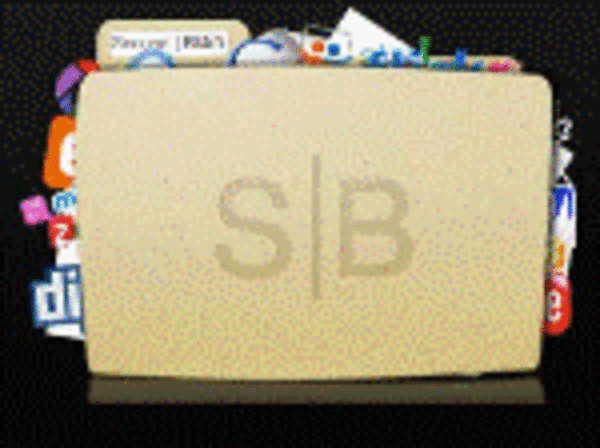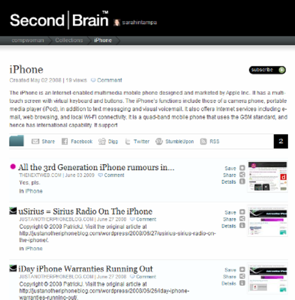It’s not often you hear an application’s creators describe their service as “an unmanageable complexity” that “compromised the user experience,” but that’s exactly what those behind the content aggregation system Secondbrain are admitting right now. Their service, a bookmarking/social-media sharing/lifestreaming/social network kind of tool was hard to describe and even harder to use.

But now, that’s all changing…or so they say. The company has basically scrapped their original concept in a revamp that’s more of a “makeunder” than it is a “makeover.” The new Secondbrain focuses on making bookmarking simpler while ditching most of the service’s other features.
Some of the best web applications on the internet are those that don’t try to do it all, but do one thing very well. That’s the type of service that Secondbrain is trying to become with their new, simplified online bookmarking tool. This major update launched late last month and is now being publicly promoted to their user base via an email newsletter.
What’s Gone from Secondbrain
Regular Secondbrain users will have to deal with the most dramatic fallout from this switch, starting with the fact that some of their content has gone missing. Imported content like pictures, videos, bookmarks, etc. from other social media services no longer exists in the new Secondbrain. Only content imported manually or with the Secondbrain bookmarklet remains.
The new Secondbrain also no longer does social media synchronization or importing of Delicious bookmarks. These are temporary limitations as the company decides on how to reintroduce these features in a more user-friendly way. For now, Delicious bookmarks can only be imported manually by browsing for and selecting your exported bookmark file generated by Delicious for import into the service.

Also gone is the lifestreaming-like feature which let you follow other users and all the content they were sharing. Perhaps realizing that sites like Facebook and FriendFeed dominate in this area, Secondbrain has decided to switch this option off, now allowing you to follow specific collections only. These collections are sets of aggregated content (blog posts, photos, videos) on a particular subject. Here are some popular collections to give you an idea. All content added to Secondbrain has to go into a collection now, but it no longer has to be tagged – that has become an optional feature.
If you choose to use this part of the service, Secondbrain almost becomes an alternative RSS reader of sorts, pulling in filtered lists of “best of” content on topics you care about. Even better, you can just grab the RSS feeds for the collections themselves (a feature added last week) and pull them into your preferred feed reader instead.
Is It Worth Revisiting?
Overall, the new service may appeal to those who are still actively using social bookmarking and unlike similar sites like Delicious or Diigo, you don’t follow people, you follow specific sets of content people create. (Diigo’s “groups” feature would be the best comparison).
Still, the bigger question about the new Secondbrain isn’t whether or not the new simplified service will appeal, but whether or not social bookmarking is even all that hot of a service anymore. It almost seems as if social bookmarking was just a pre-cursor to the social media sharing types of services we use today, like Twitter or Facebook. Because, really, if you want to casually share a link with your friends, what services do you turn to these days?
Social bookmarking still makes sense in some cases – like organizing research, sharing all the links discussed in a podcast, or compiling topic-based resource guides. In those niches, Secondbrain could still have a shot at staying afloat, but their real shot at glory may have already come and gone.










